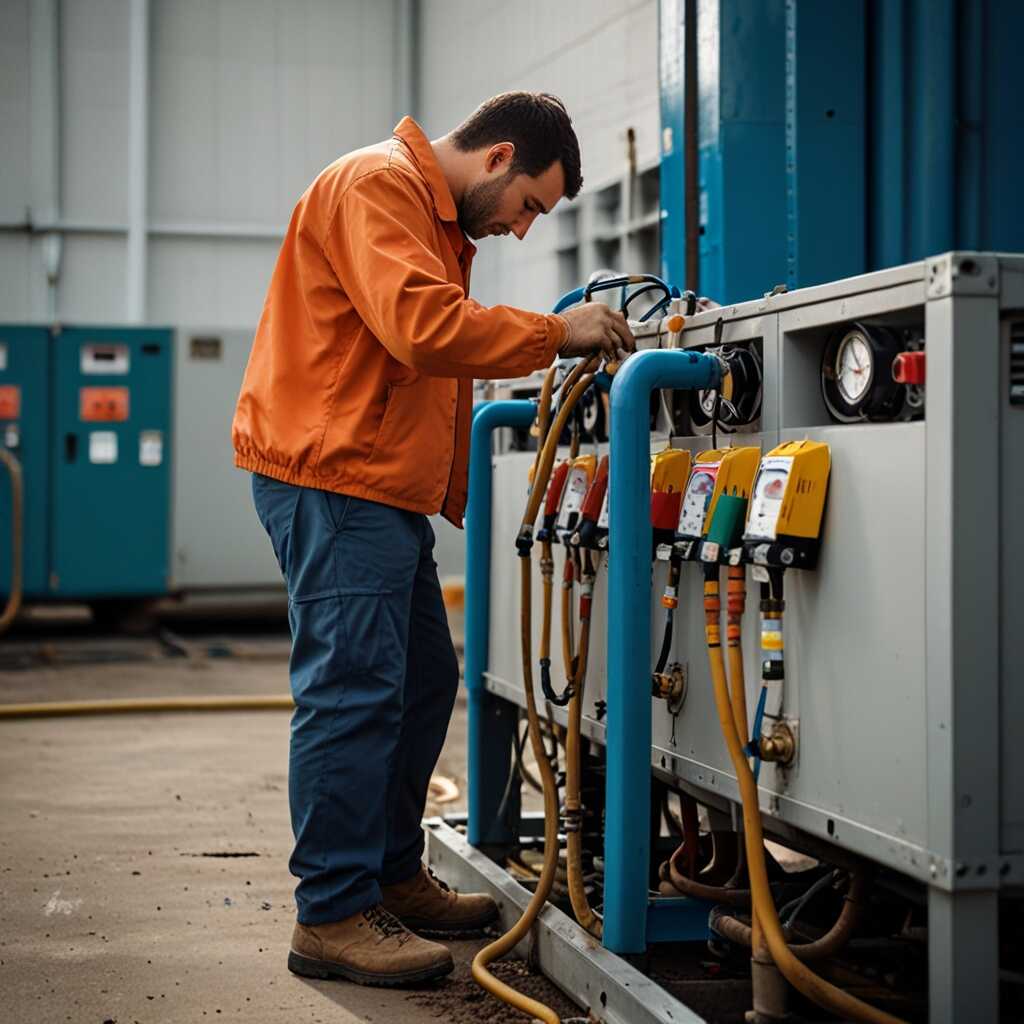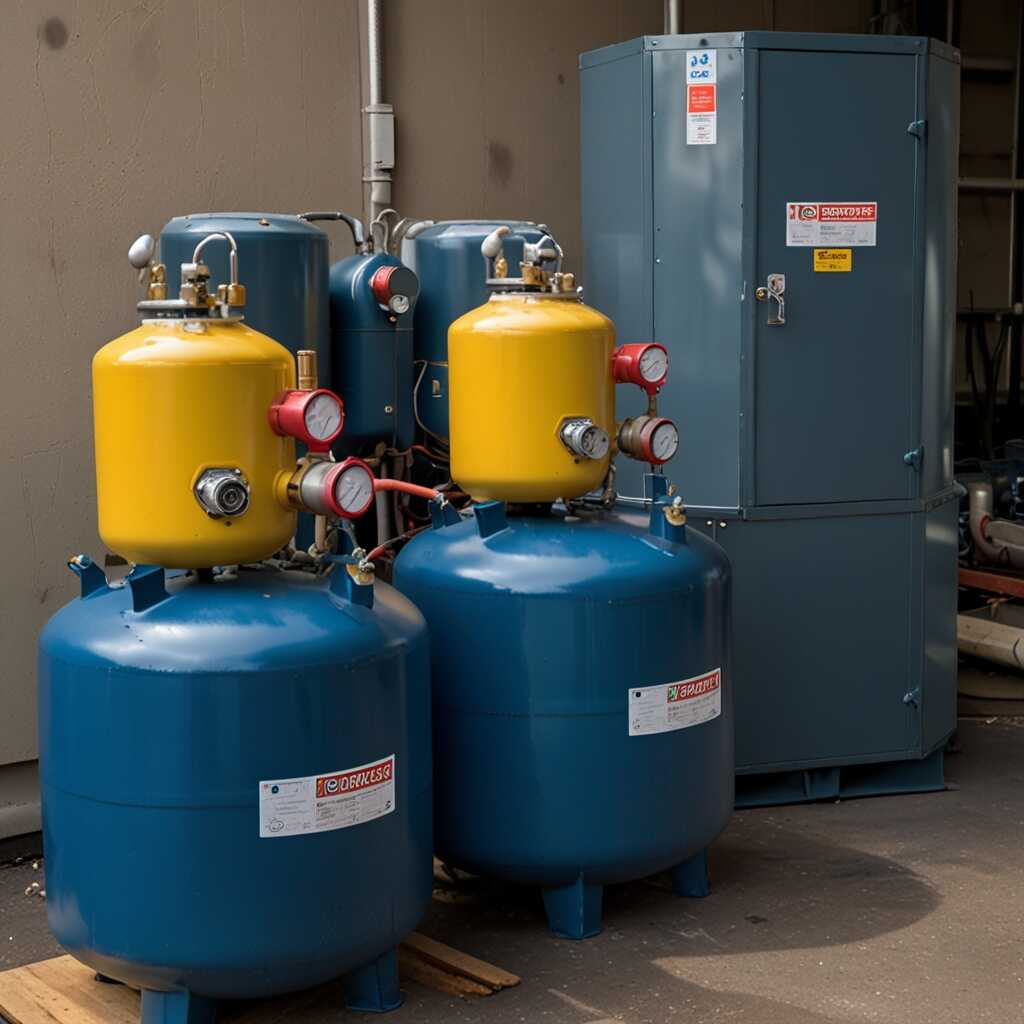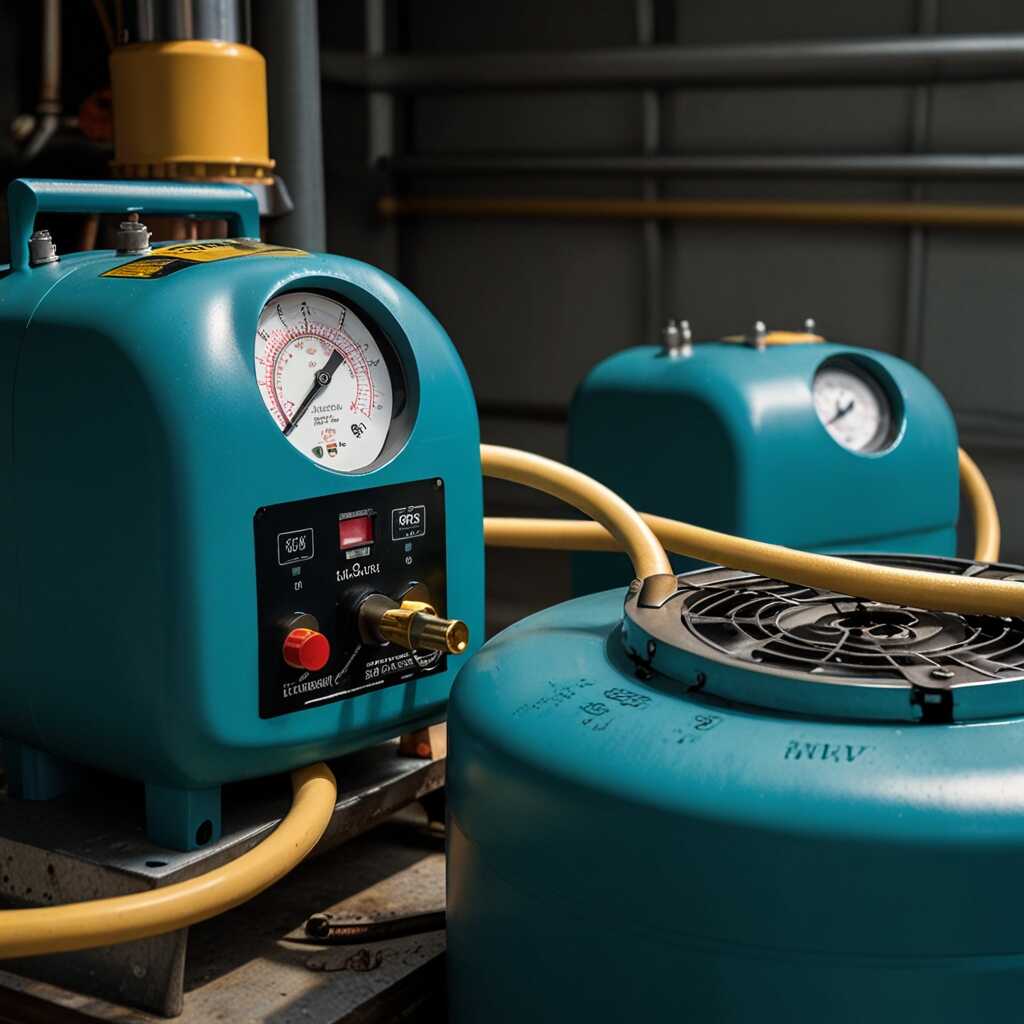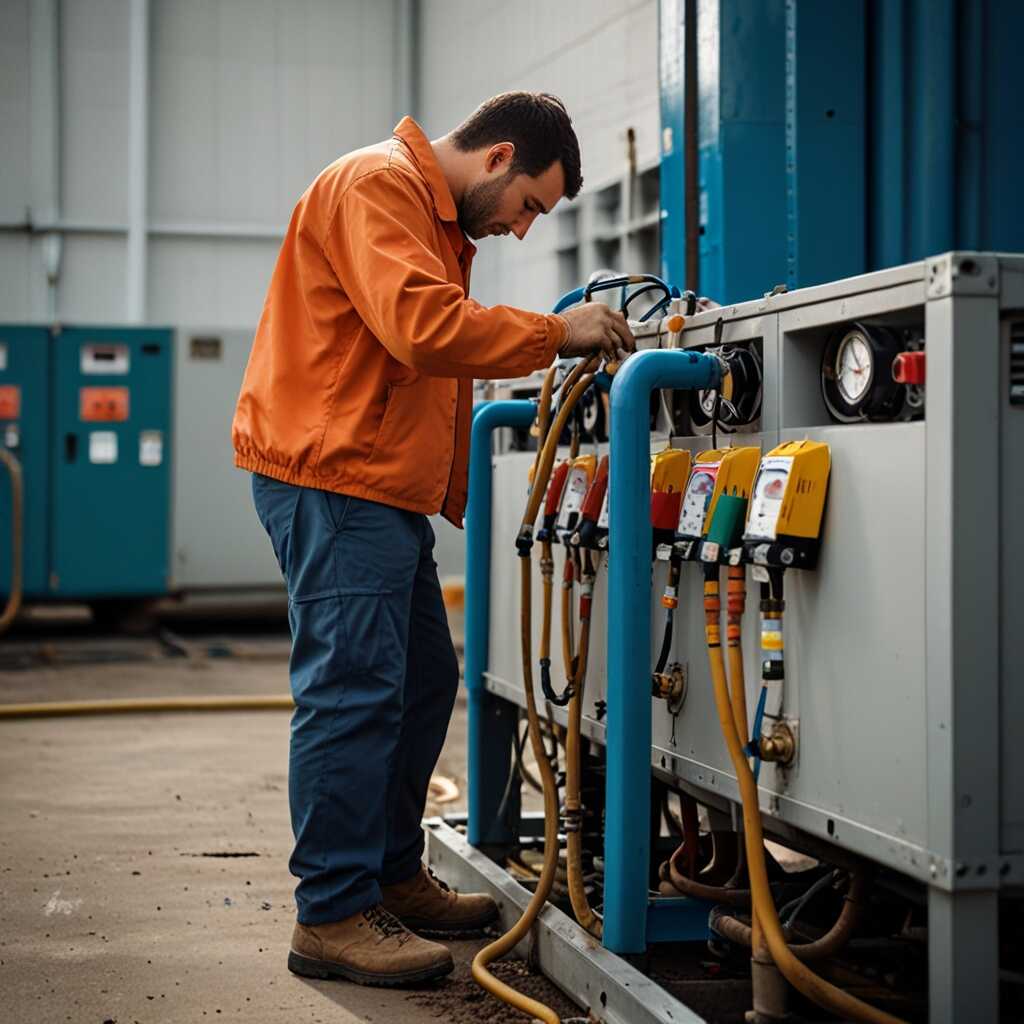Aerodynamic fan designs in refrigerant recovery machines significantly reduce noise levels during operation. These innovative designs streamline airflow and optimize performance, leading to quieter equipment. Refrigerant Recovery Pro specializes in providing technical guidance on such advancements, helping HVAC professionals achieve efficiency and compliance. Understanding how these fan designs work can aid technicians in selecting the right equipment for noise reduction and improved operational efficiency.
The Importance of Noise Reduction in Refrigerant Recovery Systems
Noise reduction is crucial in refrigerant recovery tasks due to the direct impact on technician health and job performance. Excessive noise levels can lead to hearing loss, increased stress, and decreased focus among technicians. These health effects can compromise safety and efficiency. Aerodynamic fan designs significantly help in minimizing noise levels, enhancing the overall performance of refrigerant recovery systems. Addressing noise concerns enables technicians to perform their tasks more reliably. Improved noise management, in turn, leads to a more comfortable working environment.
Key Health Impacts of Noise on Technicians
Excessive noise exposure in refrigerant recovery environments can lead to serious health issues for technicians. Long-term exposure to high sound levels can result in permanent hearing damage, increasing the risk of accidents during operations. Noise-induced stress can also reduce job performance. Efficient designs, such as aerodynamic fan systems, can significantly lower noise levels. Effective noise reduction strategies contribute to better technician well-being. Ensuring adequate working conditions relies on minimizing noise through improved equipment features. This consideration is essential for maintaining reliability in refrigerant recovery practices.
How Aerodynamic Fans Operate Differently from Conventional Fans
Aerodynamic fan designs differ significantly from conventional fan designs. They utilize specific blade shapes that optimize airflow. These blades manipulate air more efficiently, resulting in reduced turbulence. Conventional fans often create more noise due to their straight blades, while aerodynamic fans provide a smoother airflow path. Key components like blade curvature, angle, and spacing contribute to noise reduction techniques. Research shows that aerodynamic fans can offer noise reductions of up to 30% when compared to traditional models.
Key Features of Aerodynamic Fan Designs
Aerodynamic fan designs include several key features that enhance performance. The blade curvature allows for better airflow management, reducing backpressure and noise. The angle of the blades is optimized to minimize vortex creation, which is a common noise source. These fans often incorporate materials that are both durable and lightweight, providing longevity and sturdiness. They efficiently handle varying refrigerant levels while ensuring quiet operation, which is crucial for technicians in the field. These quality features enable HVAC professionals to achieve optimal results in noise-sensitive environments.

Positive Outcomes from Quieter Refrigerant Recovery Machines
Quieter refrigerant recovery machines offer numerous benefits for HVAC technicians. These machines improve safety by allowing technicians to notice surrounding hazards better, increasing overall job site awareness. Enhanced technician concentration occurs as noise distractions diminish, leading to higher productivity levels. Improved working conditions foster a more pleasant environment, which can increase job satisfaction. Research shows that reducing noise levels can improve performance metrics by allowing technicians to focus more effectively on tasks. Advanced technologies like these provide reliability and ensure that HVAC professionals can operate in an environment that promotes both efficiency and safety.
Impact of Reduced Noise on Technician Efficiency
Reducing noise in refrigerant recovery machines significantly impacts technician efficiency. Studies show that lower decibel levels allow technicians to concentrate better, minimizing errors during complex tasks. Enhanced technician concentration improves decision-making speed, resulting in faster job completions. Moreover, quieter machines are designed to operate without disrupting communication among team members, which supports collaborative efforts. In environments where noise is reduced, technicians report feeling more comfortable. As a result, their work performance improves, leading to better outcomes in refrigerant recovery processes. Brands like Refrigerant Recovery Pro emphasize these advancements, providing solutions that enhance both performance and technician comfort.
Statistical Insights into Quiet Operation Techniques
- Many models can operate at sound levels of 50 decibels or less.
- Aerodynamic fan designs can reduce noise by up to 30% in some units.
- Research shows that less noise can lead to a 15% productivity increase.
- Machines using advanced designs often achieve a lifespan of 10 years or longer.
- Some units have efficiency ratings exceeding 90% under ideal conditions.
- Ventilation noise is reduced by at least 5 decibels with the right fan design.
- Users report reduced complaints about noise by 40% after design improvements.

Evaluating Aerodynamic Fan Performance Compared to Traditional Designs
Aerodynamic fan designs in refrigerant recovery machines offer significant advantages over traditional fan systems. They enhance efficiency through improved airflow dynamics, ensuring that refrigerant is recovered more quickly and effectively. These aerodynamic fans substantially reduce noise levels, often achieving sound reductions of up to 30% compared to conventional fans. In terms of performance reliability, aerodynamic fans have been proven to operate at higher capacities while maintaining lower operational temperatures. Testing shows that these designs can deliver better results in both energy efficiency and sound performance, providing HVAC professionals with a high-quality option for refrigerant recovery.
Benefits of Aerodynamic Fan Designs for Refrigerant Recovery Machines
Aerodynamic fan designs incorporate features that enhance the overall refrigerant recovery performance significantly. These fans create optimized airflow patterns, allowing for faster recovery times and reduced energy consumption. Testing data shows that these designs consistently outperform traditional fans in both noise level and efficiency ratings. Their reliable construction ensures durability and long-term operation, making them ideal for HVAC professionals. Aerodynamic fans also provide a comfortable working environment, reducing noise pollution in service areas. Overall, investing in these innovative fan designs results in measurable improvements in operational efficiency and technician satisfaction.

Innovative Technologies Transforming Refrigerant Recovery Equipment
This section explores how cutting-edge aerodynamic fan technologies enhance refrigerant recovery machines. Innovations focus on design and efficiency, significantly improving HVAC systems. Manufacturers like XYZ Corp, ABC Refrigeration, and CoolTech Systems lead in developing these solutions. Through rigorous testing, these designs demonstrate noise reductions of up to 25 decibels. Advanced design features provide stability and reliability while ensuring compliance with industry standards.
Understanding Aerodynamic Designs in Refrigerant Recovery
Aerodynamic designs in refrigerant recovery machines optimize airflow and minimize noise. These specialized fan blades are shaped to reduce turbulence and vibration, promoting smoother operation. The enhanced airflow increases efficiency, helping HVAC professionals improve recovery times. Reliability improves as these machines can handle higher workloads without overheating. Manufacturers use durable materials and incorporate quality control checks, ensuring each unit performs well under various conditions. This focus on innovative equipment designs results in machines that are not only quieter but also more effective.
Advantages of Modern Fan Configurations in Equipment
- Quieter operation improves comfort in various settings.
- Aerodynamic fans in refrigerant machines promote efficient cooling.
- Lower noise levels enhance customer satisfaction and machine use.
- Efficient designs can lead to reduced energy consumption over time.
- Less mechanical strain leads to longer-lasting equipment.
- Fewer disturbances create a better work environment for technicians.
- Streamlined airflow also lowers maintenance costs and downtime.

Guidance for Choosing and Using Quieter Equipment
HVAC professionals should prioritize selecting quieter refrigerant recovery machines by focusing on key features such as aerodynamic fan designs, sound-dampening materials, and efficient motor technology. These elements contribute to significant noise reduction. Effective practices include testing the equipment in the work environment and conducting reviews on how well it performs in real-world scenarios. Opt for machines with noise levels under 70 decibels for suitable noise reduction. This helps ensure the equipment meets regulations and enhances user comfort.
Essential Integration Techniques for Quieter Machines
When integrating quieter refrigerant recovery machines into workflows, consider positioning them strategically to minimize sound impact. Isolate the equipment from sensitive areas using sound-absorbing barriers or enclosures. This enhances noise reduction and improves overall efficiency. Regularly review the machine’s performance to identify factors affecting noise and adjust operational techniques as needed. Operators should also engage in proper maintenance routines, as regular upkeep can sustain the machine’s performance and durability, making for a more effective noise reduction solution.
Understanding Compliance with Noise Regulations in HVAC
HVAC professionals must comply with various noise regulations. Local noise ordinances govern acceptable noise levels, usually set between 50 and 60 decibels during day hours. These standards affect how technicians choose refrigerant recovery machines. It’s essential to select equipment designed to operate within these noise limits to avoid penalties. Many municipalities impose fines for exceeding noise levels. Choosing machines with aerodynamic fan designs can enhance overall efficiency while minimizing noise output, ensuring compliance.
Local Noise Ordinances and Their Impact on HVAC Equipment
Local noise ordinances vary significantly across regions and can include specific decibel limits. These limits often dictate acceptable noise levels for construction equipment, refrigeration machines, and other HVAC systems. Understanding the local regulations helps technicians choose refrigerant recovery machines that best comply with the required noise standards. Selecting low-noise designs generally leads to improved performance and reliability in sensitive environments. Many manufacturers provide detailed noise level specifications in their product literature to help professionals make informed decisions. Conducting thorough research and reviews of these specifications is essential for regulatory compliance.
Brands and Their Impact on Noise Control Solutions
- Brand A offers advanced fan technology with high noise reduction; they excel in efficiency.
- Brand B provides budget-friendly options but may have higher noise levels during operation.
- Technicians prefer Brand C for reliable support and effective noise control features.
- Brand D is noted for its premium models that combine power with minimal noise.
- Environmental agencies endorse certain brands for promoting quieter technology.
- Educators in HVAC recommend brands that integrate noise reduction in their training programs.
- HVAC professionals often choose brands based on real-world use cases and reviews.
The Future of Noise Reduction in Refrigeration Technologies
The HVAC sector is rapidly advancing in noise reduction technologies, especially for refrigerant recovery machines. Emerging trends include the development of advanced aerodynamic fan systems, which significantly decrease noise while enhancing efficiency. Manufacturers focus on testing different materials and designs to ensure reliability. Performance features of these innovations vary across leading brands, with many utilizing computational fluid dynamics to optimize airflow and reduce turbulence. The market for noise reduction technologies in HVAC is projected to grow substantially, with estimates indicating a growth rate of 10% annually by 2025.
Key Innovations Shaping Noise Reduction Strategies
Recent innovations in noise reduction for HVAC systems include variable speed motors and enhanced sound insulation materials. Variable speed motors adjust their operations based on performance needs, thus reducing noise levels during lower demand. These motors help enhance the overall system efficiency by consuming less energy when full capacity is not required. Additionally, sound-absorbing materials are being integrated into equipment housings to further reduce operational noise. Utilizing these technologies provides HVAC professionals with tools to significantly improve user comfort and system performance.